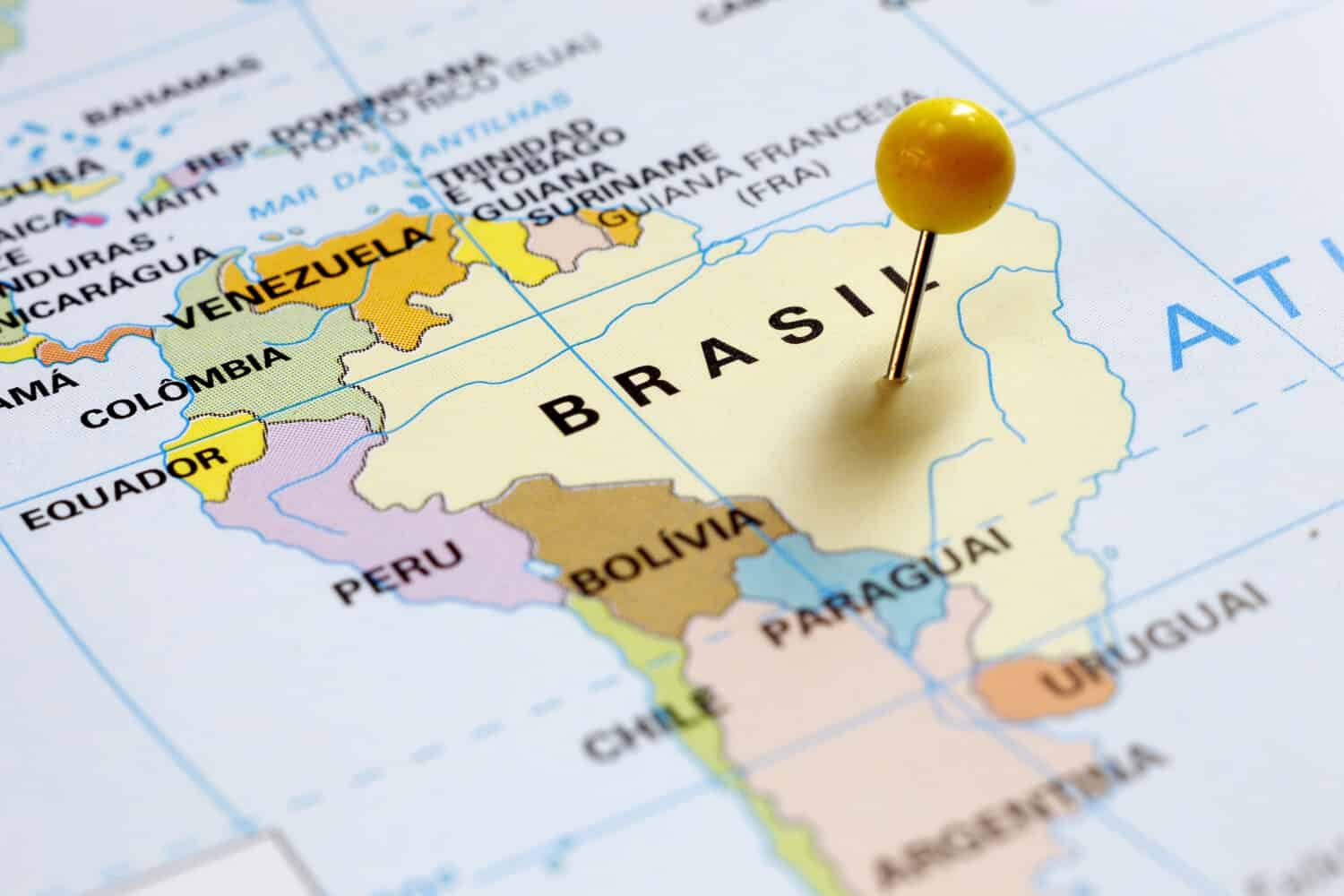In a world filled with statistics, there is one that measures the wealth and health of countries. The GDP, or gross domestic product, measures that nation’s producing power. This in turn lets other countries and individuals know about that country’s wealth. Luxembourg, with a rough GDP per capita of 140,000, is the “wealthiest” country, followed by Singapore.
When it comes to South America, their “wealth” is much lower than Luxembourg, Singapore, or even the United States. But this indicator can also be a sign of how each South American nation is doing not only economically, but also politically and socially. Let’s take a look at the 10 richest countries in South America, in terms of GDP per capita.

1. Chile

The Atacama Desert, located in Chile, is the world’s driest place (yes, drier than the Sahara!)
©Jose Luis Stephens/Shutterstock.com
With a population of almost 18 million and a GDP per capita of $25,110.20, Chile is the richest country in South America. Because Chile’s government is focused on free trade, foreign investment is high in Chile. They are one of the largest exporters of grapes, but they also export wine and copper.
Chile claimed independence from Spain in 1810. In 1973, the military with the help of the US government overthrew Salvador Allende and a dictatorship was installed. General Augusto Pinochet ruled the country with an iron fist for 16 years. Now, Chile is considered to be one of the most politically stable countries in South America.
2. Uruguay

Uruguay’s national anthem is the longest in the world with 105 music bars.
©Leonid Andronov/iStock via Getty Images
Although it’s one of the smallest countries in South America with a population of 3.3 million, it’s the second richest country in the continent with a GDP per capita of $22,793.70. Livestock and agricultural production are the biggest exports of the country.
Uruguay was also controlled by Spain until its independence in 1828. Throughout the 19th century, the country was engulfed in a civil war. This political uncertainty brought a military dictatorship that continued into the mid-1980s. Today, however, Uruguay is a successful nation with political and economic stability.
3. Argentina

Argentina is the second-largest country in South America and the fifth-largest Spanish-speaking country globally (after Mexico, the United States, Colombia, and Spain).
©AdonisVillanueva/iStock via Getty Images
With a population of 44 million, Argentina has a GDP per capita of $20,770.70. Tourism plays a big part in Argentina, especially in the regions of Patagonia in the southern portion of the country and its capital Buenos Aires. They also have a big sheep herding industry, as well.
The Spanish lost control of Argentina when they claimed independence in 1816. However, throughout much of the 19th and 20th centuries, Argentines suffered a series of fascist dictatorships and civil wars. The economy suffered and it wasn’t until the last thirty years that the country has regained political stability and economic stabilization.
4. Guyana
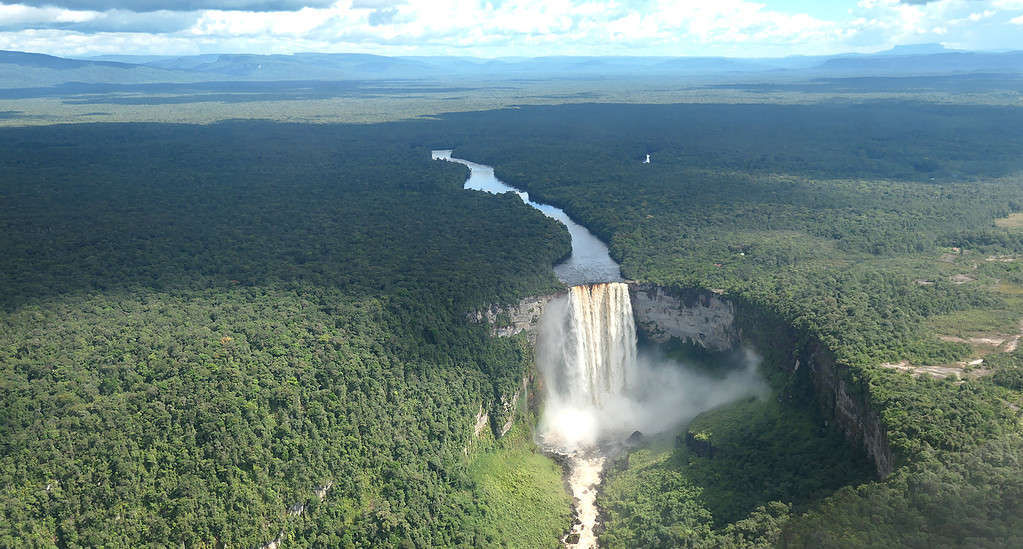
Guyana’s official language is English, making it the only South American country with English as the official language.
©deeltijdgod/iStock via Getty Images
A small country nestled between Venezuela, Brazil, and Suriname, Guyana has a GDP per capita of $19,704.60. The country mainly produces agricultural goods like rice and sugarcane, but also minerals like gold and bauxite.
Unlike other countries in South America, Guyana claimed independence from the British and now belongs to the Commonwealth of Nations. Since its independence, Guyana has enjoyed relative political and economic stability, especially after welcoming powerful Western nations into the country.
5. Suriname
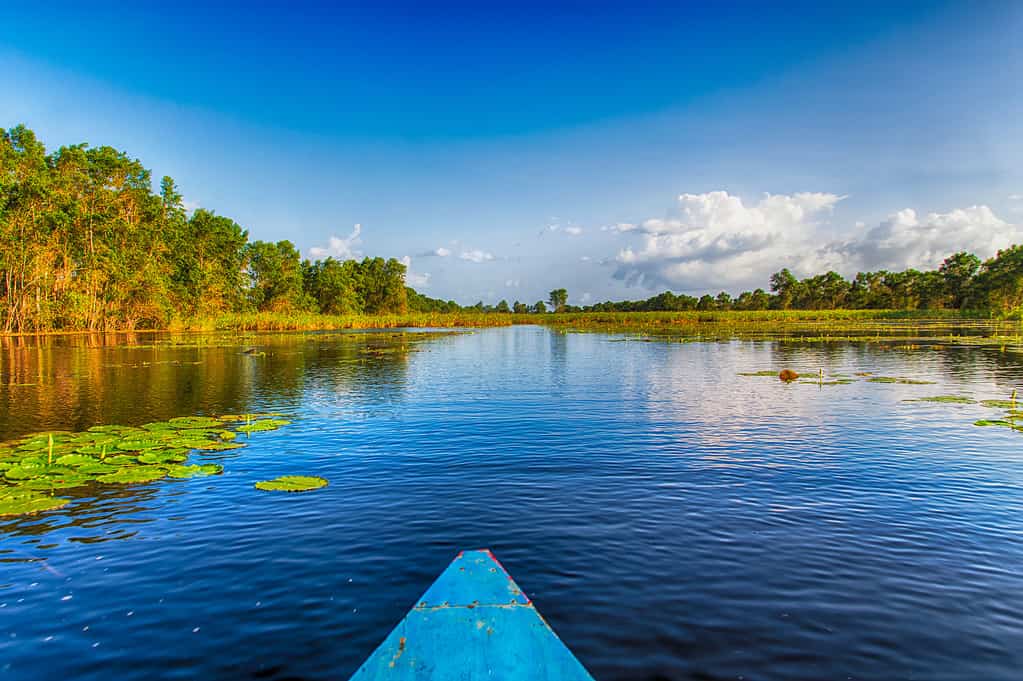
Suriname’s official language is Dutch, the only country in South America with Dutch as the official language.
©atosan/iStock via Getty Images
Suriname is another country on this list that was never under Spanish control. Independent since 1975, Suriname has a GDP per capita of $16,734.70. The country is very rich in natural resources and produces minerals like bauxite.
Suriname was controlled by the Netherlands until its independence. Afterward, military dictatorships ruled the country throughout much of the 1970s, and 1980s. It wasn’t until 1991, with US, UK, and Dutch involvement that the country became democratic and politically stable, and thus eventually economically stabilized.
6. Colombia
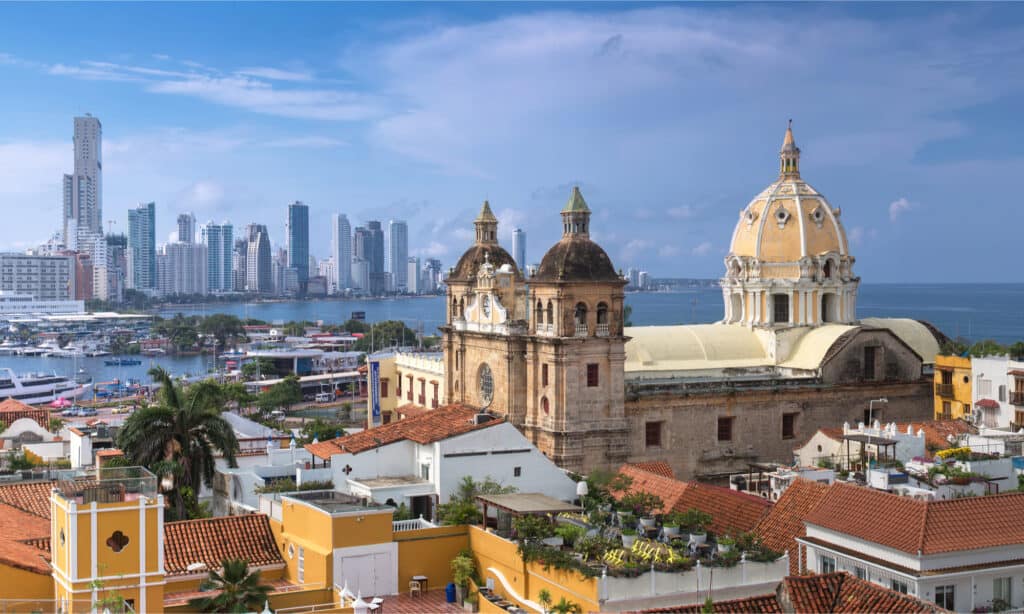
Colombia takes the top spot as the most biodiverse country in the world.
©sunsinger/Shutterstock.com
One of the most populated countries in the continent, Colombia has a population of 48 million and a GDP per capita of $14,931.00. The country’s main production includes bananas, coffee, oil, and unfortunately, illegal drugs. Colombia has battled the drug cartels with the help of the US for years.
Colombia claimed independence from Spain in 1819 with the leadership of Venezuelan general Simon Bolivar (whom Bolivia is named after). Since then, the country has had decades of political instability, going back and forth between civil wars, military regimes, and democratic governments. Today, Colombia is a democracy and Gustavo Petro is President.
7. Brazil

Brazil is the largest country in the world and has four time zones.
©Brastock/Shutterstock.com
The largest country in South America, Brazil has a population of 208 million and a GDP per capita of $14,835.40. With the Amazon mostly in the country, Brazil has a lot of natural resources it produces, much to the dismay of environmentalists because of the Amazon’s decimation in recent years.
Brazil was controlled by both Spain and Portugal, but it was Portugal who retained control for centuries. In 1822, it claimed independence and it finally became a democracy in 1888. Unfortunately, like in many South American countries, Brazil fell to a dictatorship in 1964. It wasn’t until 1985 that the country became a democracy again.
8. Paraguay
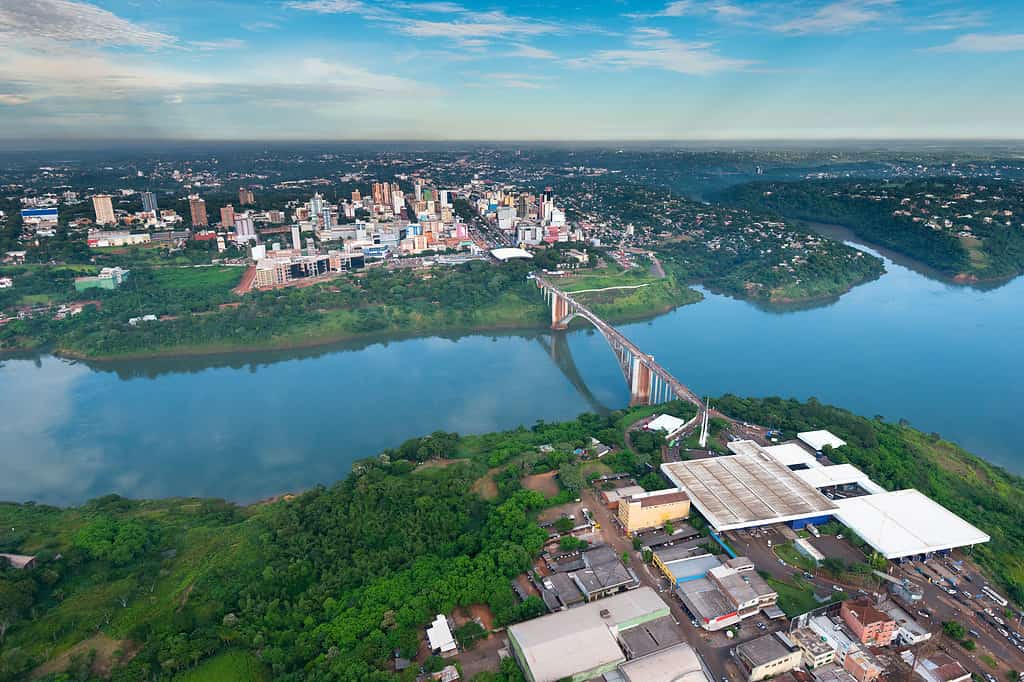
Besides Spanish, most Paraguayans also speak Guarani.
©tifonimages/iStock via Getty Images
With a GDP per capita of $13,069.20, Paraguay is a top producer of soybeans, as well as corn, wheat, and Tung oil. It has been one of several South American countries with rapid economic growth in recent years.
Paraguay experienced a civil war in the mid-1940s that led to a long dictatorship that lasted for more than 30 years. Since then, a democracy has been installed even though at first there was a lot of political instability.
9. Peru
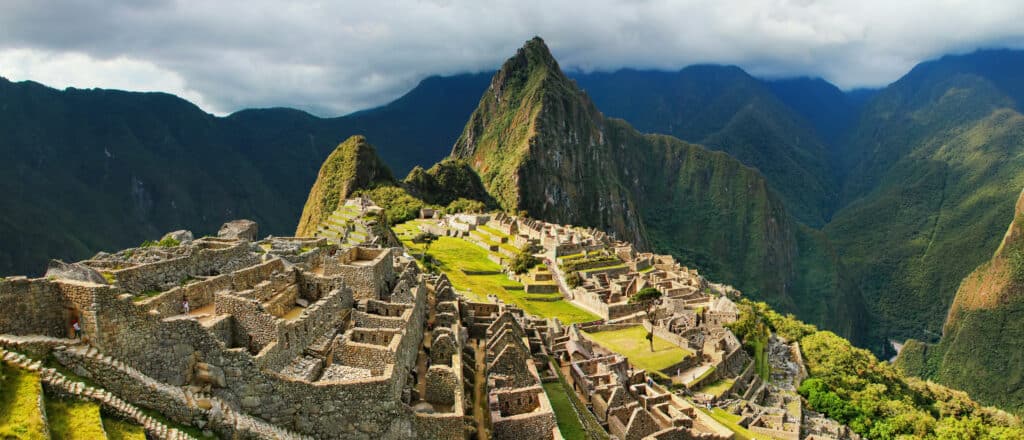
Machu Picchu, located in Peru, is one of the New Seven Wonders of the World.
©Don Mammoser/Shutterstock.com
With a GDP per capita of $11,878.50, Peru mainly produces natural resources like gold, zinc, and copper. They also have oil reserves that have been in demand in recent years.
Home to Machu Picchu, the ancient city the Incans built, Peru has had independence from Spain for over two hundred years. Much of Peru’s time as an independent country has been riddled with military dictatorships. The nation achieved democracy in the early 1980s and has continued to be free for several decades, although not without struggle.
10. Ecuador

Ecuador is named because it’s the closest country to the equator.
©Previewaudiovisuales93/Shutterstock.com
Ecuador has a GDP per capita of $10,895.80. With agricultural products like bananas, rice, and coffee, as well as cattle, sheep, and pork, as their main exports, Ecuador has achieved relative economic success in recent times.
After Spanish rule, like other South American countries, Ecuador has had struggles with military rule throughout the 20th century. Since 1979 after a new constitution was enacted Ecuador has enjoyed democracy.
Conclusion
And there you have it, these are the 10 richest countries in South America. Only Bolivia and Venezuela remain below this list of 10. Many of the indicators seem to fall true. If a country is politically unstable, it may suffer in producing power because of what is happening internally. There are so many factors that affect and play into a country’s economic health.
Although sometimes the GDP measurements can seem archaic, they can also be a good tool to study other factors in that particular nation — their social progressiveness and their political stability, to name a few. The GDP just gives you a glimpse of the country’s bigger picture.
Discover the 10 Richest Countries In South America
| Rank | Country | GDP per capita |
|---|---|---|
| 1 | Chile | $25,110.20 |
| 2 | Uruguay | $22,793.70 |
| 3 | Argentina | $20,770.70 |
| 4 | Guyana | $19,704.60 |
| 5 | Suriname | $16,734.70 |
| 6 | Colombia | $14,931.00 |
| 7 | Brazil | $14,835.40 |
| 8 | Paraguay | $13,069.20 |
| 9 | Peru | $11,878.50 |
| 10 | Ecuador | $10,895.80 |
Thank you for reading! Have some feedback for us? Contact the AZ Animals editorial team.

